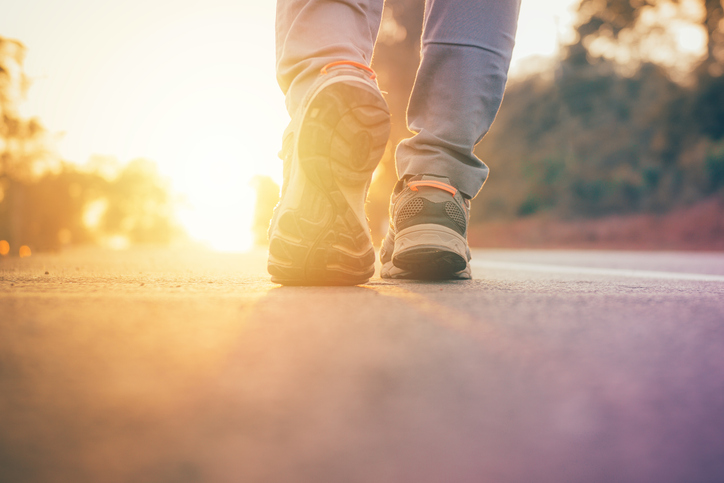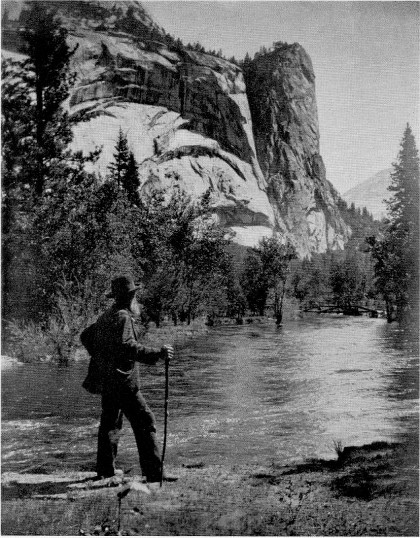
“It is the best of humanity, I think, that goes out to walk. In happy hours all affairs may be wisely postponed for this. Dr. Johnson said, ‘Few men know how to take a walk,’ and it is pretty certain that Dr. Johnson was not one of those few. It is a fine art; there are degrees of proficiency, and we distinguish the professors from the apprentices. The qualifications are endurance, plain clothes, old shoes, an eye for nature, good-humor, vast curiosity, good speech, good silence, and nothing too much. Good observers have the manners of trees and animals, and if they add words, it is only when words are better than silence. But a vain talker profanes the river and the forest, and is nothing like so good company as a dog.” –Ralph Waldo Emerson, “Country Life,” 1857
“Your true kingdom is just around you, and your leg is your scepter. A muscular, manly leg, one untarnished by sloth or sensuality, is a wonderful thing.” –Alfred Barron, Foot Notes, Or, Walking as a Fine Art, 1875
Solvitur ambulando.
It’s a Latin phrase that literally means, “It is solved by walking.” Or, a little more loosely, “It is solved by walking around.”
Walking? “What problems have ever been solved by walking?” you may be asking yourself.
True enough, there is hardly anything more simple and less exciting than walking. It’s one of our first developmental milestones as babies, and once you take those initial toddling steps, neither you, nor those around you, take much notice of your walking ever again. If you happen to think about walking later in life, images of elderly women decked out in windsuits and circling the mall in the early morning hours may come to mind. Indeed, so unsexy is walking that our word for a person who travels by foot — pedestrian — is also a synonym for “dull” and “ordinary.”
‘Twas not always so, however. There was a time in which writers and philosophers wrote poems and paeans to the humble walk, publishing books and essays with titles such as “The Reveries of the Solitary Walker,” “In Praise of Walking,” and “Walking as a Fine Art.” Bipedal locomotion was referred to as “the manly art of walking,” and enrollment in the “noble army of walkers” was encouraged.
Did these long-dead bipedaling boosters know something that modern men do not? While walking’s simplicity may seem like a mark against it, perhaps its rudimentary nature is just the thing to bring us back to life’s much needed basics. Walking upright is part of what makes us human, after all, and who wouldn’t benefit from getting in touch with their humanity a little more often?
Walking is the world’s most democratic activity – it is open to almost everyone, whether young or old, rich or poor. It can be participated in no matter where you are. One can walk to work, stroll around their neighborhood, stride down city blocks, ramble through a parking lot, or saunter over hill and dale. All it takes to begin is placing one foot in front of the other. Despite this accessibility, we probably do less walking these days than ever before in history – the bulk of our day is spent riding, driving, and sitting.
Yet, taking the time to fit in more walking wherever and whenever we can, and putting our legs to their intended use, is a worthwhile endeavor. Below we discuss 11 “problems” that can be “solved” through the completely free remedy of taking a walk. We’ve also peppered the post with some of the best and pithiest quotes that we dug up from the surprisingly robust canon of walking literature. Think of this piece as one part article, one part quote repository. Read it through in one fell swoop, or come back to it from time to time when you need some motivation to get yourself out the door.
Solvitur ambulando.
Need a cheap form of transportation?

“For most urbanites there is the opportunity for the daily walk to and from work, if only they were not tempted by the wheel of the street car or motor. During the subway strike in New York not long ago I saw ablebodied men riding in improvised barges or buses going at a slower-than-walking pace, because, I suppose, though still possessed of legs, these cliff-dwellers had become enslaved by wheels, just like the old mythical Ixion who was tied to one.” –John Finley, “Traveling Afoot,” 1917
“When I see the discomforts that ablebodied American men will put up with rather than go a mile or half a mile on foot, the abuses they will tolerate and encourage, crowding the street car on a little fall in the temperature or the appearance of an inch or two of snow, packing up to overflowing, dangling to the straps, treading on each other’s toes, breathing each other’s breaths, crushing the women and children, hanging by tooth and nail to a square inch of the platform, imperiling their limbs and killing the horses—I think the commonest tramp in the street has good reason to felicitate himself on his rare privilege of going afoot. Indeed, a race that neglects or despises this primitive gift, that fears the touch of the soil, that has no footpaths, no community of ownership in the land which they imply, that warns off the walker as a trespasser, that knows no way but the highway, the carriage-way, that forgets the stile, the foot-bridge, that even ignores the rights of the pedestrian in the public road, providing no escape for him but in the ditch or up the bank, is in a fair way to far more serious degeneracy.” –John Burroughs, “The Exhilarations of the Road,” 1895
Obviously, the most basic, primitive function of walking is to get from A to B. Foot-power requires no money, and no energy source besides a peanut butter sandwich. Yet, as Burroughs lamented over a century ago, as soon as motorized transportation was invented, people would do most anything to avoid having to hoof it. For some it’s a matter of convenience, often real, sometimes only perceived; many do not think of walking for even the shortest of errands, choosing to drive even when getting into one’s car and finding a parking spot can take almost as long. Others see walking as a safety hazard; I’m always amazed at the number of parents in SUVs that line up in my neighborhood in the afternoon in order to whisk their children right from the bus the quarter-mile to their house. Many folks, on the other hand, do wish they could walk more to get where they need to be, but their city/town was not laid out with any concern for pedestrian transportation. For someone who grew up in such a pedestrian-antagonistic town, moving to a place where walking becomes a practical possibility requires a mindset change. When I moved to Vermont for a stint, for the first time in my life I could walk into town to do my errands, and while at first the 15-minute “journey” seemed looong, I grew to really enjoy it and it became quite natural; soon if I needed to go somewhere, my first instinct was whether I could walk it.
Want to be prepared, come what may?
“I have read that the Scotch once had a custom of making a yearly pilgrimage or excursion around their boroughs or cities — ‘beating the bounds,’ they called it, following the boundaries that they might know what they had to defend. It is a custom that might profitably be revived. We should then know better the cities in which we live. We should be stronger, healthier, for such expeditions, and the better able and the more willing to defend our boundaries.” –John Finley, “Traveling Afoot,” 1917
“It is good for a man to keep himself in such condition that he can do ten miles on short notice. The deficiency in this respect, to which most people confess, is not a pleasant thing to contemplate.” –Alfred Barron, Footnotes, Or, Walking as a Fine Art, 1875
Even if those in developed countries rarely have a need to walk to get where they’re going, keeping up one’s walking endurance seems like a good “survival” skill to have. If walking once again became the only form of transportation available, say during the apocalypse, you’d be able to push your shopping cart of supplies across the country, ala the father in Cormac McCarthy’s The Road. Being able to walk long distances is also essential for being prepared for military service – where a principle form of transportation is the good old-fashioned march.
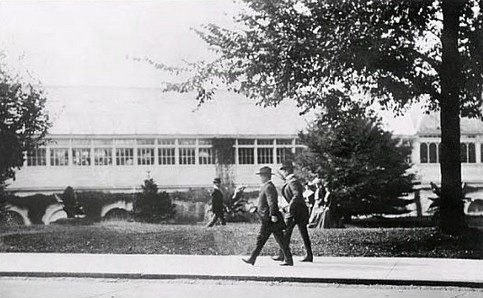
Theodore Roosevelt walking to work. September 20, 1901.
Near the end of Theodore Roosevelt’s presidency, he was out on one of his regular “rough cross-country walks” at DC’s Rock Creek Park with some young Army officers. He was chagrined to hear from them of the “condition of utter physical worthlessness into which certain of the elder ones [officers] had permitted themselves to lapse, and the very bad effect this would certainly have if ever the army were called into service.” When TR looked into the matter, he found that “otherwise good men proved as unable to walk as if they had been sedentary brokers.” He thus “issued directions that each officer should prove his ability to walk fifty miles, or ride one hundred, in three days.” Despite the fact that this was a test, Teddy argued, “which many a healthy middleaged woman would be able to meet,” he got a lot of pushback from older officers who worked desk jobs. TR settled the matter by performing the ride requirement himself in snow and sleet, demonstrating how easy it was.
According to a naval officer who wrote to Roosevelt, the walking test was highly effective in getting men ready for the rigors of service:
“The original test of 50 miles in three days did a very great deal of good. It decreased by thousands of dollars the money expended on street car fare, and by a much greater sum the amount expended over the bar. It eliminated a number of the wholly unfit; it taught officers to walk; it forced them to learn the care of their feet and that of their men; and it improved their general health and was rapidly forming a taste for physical exercise…
This test may have been a bit too strenuous for old hearts (of men who had never taken any exercise), but it was excellent as a matter of instruction and training of handling feet—and in an emergency (such as we soon may have in Mexico) sound hearts are not much good if the feet won’t stand.”
The officer lamented that the Navy had since changed the standard to ten miles once a month — a test which he found would not produce the same benefits as a walk that had to be carried out over at least two days. The reason? The first day of walking is easy; it’s the second day, when one’s muscles and feet are sore, that’s the real challenge. The prospect of that second day, the officer explained, is what:
“made ’em sit up and take notice—made ’em practice walking, made ’em avoid street cars, buy proper shoes, show some curiosity about sox and the care of the feet in general…
The point is that whereas formerly officers had to practice walking a bit and give some attention to proper footgear, now they don’t have to, and the natural consequence is that they don’t do it.
There are plenty of officers who do not walk any more than is necessary to reach a street car that will carry them from their residences to their offices. Some who have motors do not do so much. They take no exercise. They take cocktails instead and are getting beefy and ‘ponchy,’ and something should be done to remedy this state of affairs.”
Spiritually dry?
“I have met with but one or two persons in the course of my life who understood the art of Walking, that is, of taking walks,—who had a genius, so to speak, for sauntering, which word is beautifully derived ‘from idle people who roved about the country, in the Middle Ages, and asked charity, under pretense of going a la Sainte Terre,’ to the Holy Land, till the children- exclaimed, ‘There goes a SainteTerrer,’ Saunterer, a Holy-Lander. They who never go to the Holy Land in their walks, as they pretend, are indeed mere idlers and vagabonds; but they who do go there are saunterers in the good sense, such as I mean….For every walk is a sort of crusade, preached by some Peter the Hermit in us, to go forth and reconquer this Holy Land from the hands of the Infidels.” —Henry D. Thoreau, “Walking,” 1862
“The geographical pilgrimage is the symbolic acting out an inner journey. The inner journey is the interpolation of the meanings and signs of the outer pilgrimage. One can have one without the other. It is best to have both.” –Thomas Merton, Mystics & Zen Masters, 1961
Pilgrimages – the purest of which are conducted on foot – are a religious rite shared by nearly all the world’s faiths. That believers of varying stripes might incorporate walking into their pursuit of spirituality is not surprising. A pilgrimage takes our shared metaphor of life as a journey, in which a lone sojourner must struggle with courage and hope through the wilderness, and turns it into a concrete, bodily experience; it converts the abstract into a tangible path, with real goals and obstacles and pain.
A pilgrimage can separate the traveler from the distractions of everyday life and act as a process of transformation and purification. The physical hardship of the journey can nullify the temptations of the flesh, while also showing one’s devotion to his faith; a pilgrim may hope to present this sacrifice to God as a penance for his sins, or an offering for the healing of another. And of course the pilgrim may experience additional insights or blessings once he reaches the holy site he has journeyed to.
“I personally would rather do the existentially essential things in life on foot. If you live in England and your girlfriend is in Sicily, and it is clear you want to marry her, then you should walk to Sicily to propose. For these things travel by car or aeroplane is not the right thing.” –Werner Herzog, Of Walking in Ice, 1978
Even an avowed atheist might believe that the effort put forth through walking could somehow be converted into a kind of supernatural force. Such is the case of filmmaker Werner Herzog, who does not have a belief in God, but does possess a sort of faith in walking. In 1974, when he was 32 years old, Herzog heard that film historian and critic Lotte H. Eisner was gravely ill. Herzog considered her a dear mentor, and vowed, “I am not going to fly, I refuse to take a plane, refuse to take a car, I refuse to do anything else, I will come on foot,” because, he explained, “I was totally absolutely convinced that while I was walking from Germany to Paris to see her, she would not have a chance to die.”
Herzog used his compass to determine the straightest course to his destination and then set out in the middle of winter to walk from Munich to Lotte’s home in France – a journey of nearly 515 miles. For three weeks he traveled as a hobo, eschewing hotels in favor of abandoned homes and barns, and spent his journey getting reacquainted with himself, as well as observing the people and places he encountered. After hundreds of miles of arduous tramping, he arrived in France to find that his faith in walking had not been in vain — Lotte was indeed still alive and well.
Want to really get to know a place?
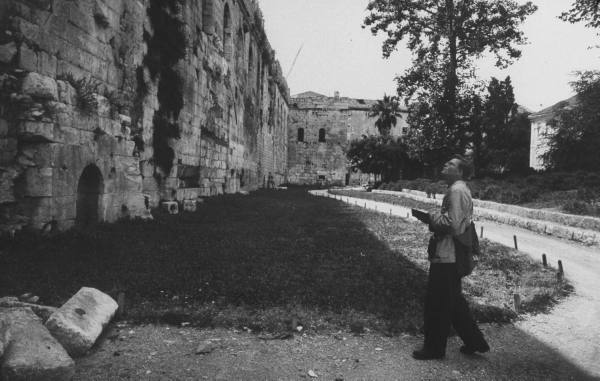
“Your pedestrian is always cheerful, alert, refreshed, with his heart in his hand and his hand free to all. He looks down upon nobody; he is on the common level. His pores are all open, his circulation is active, his digestion good. His heart is not cold, nor his faculties asleep. He is the only real traveller…He is not isolated, but one with things, with the farms and industries on either hand. The vital, universal currents play through him. He knows the ground is alive; he feels the pulses of the wind, and reads the mute language of things. His sympathies are all aroused; his senses are continually reporting messages to his mind. Wind, frost, ruin, heat, cold, are something to him. He is not merely a spectator of the panorama of nature, but a participator in it. He experiences the country he passes through—tastes it, feels it, absorbs it; the traveller in his fine carriage sees it merely. This gives the fresh charm to that class of books that may be called “Views Afoot,” and to the narratives of hunters, naturalists, exploring parties, etc. The walker does not need a large territory. When you get into a railway car you want a continent, the man in his carriage requires a township; but a walker like Thoreau finds as much and more along the shores of Walden pond…
I think if I could walk through a country I should not only see many things and have adventures that I would otherwise miss, but that I should come into relations with that country at first band, and with the men and women in it, in a way that would afford the deepest satisfaction…
Man takes root at his feet, and at best he is no more than a potted plant in his house or carriage, till he has established communication with the soil by the loving and magnetic touch of his soles to it. Then the tie of association is born; then spring those invisible fibres and rootlets through which character comes to smack of the soil, and which makes a man kindred to the spot of earth he inhabits.” -John Burroughs, “The Exhilarations of the Road,” 1895
There is no better way of getting to know a place — whether your own backyard or an exotic locale — than by walking it. At such a slow pace, you are able to notice rich details that would otherwise pass you by. In your neighborhood you begin to observe the little details of others’ homes; in the woods you discover new plants and creatures; in the city you find small stores, restaurants, and alleyways you’d otherwise miss; when venturing abroad you give yourself opportunities to meet and converse with the locals. Whenever I visit a new place, I’m eager to set off on a walk from my lodgings to explore the sights, sounds, and smells of my new surroundings.
This was actually the method of exploration used predominantly by Meriwether Lewis as part of the Lewis and Clark expedition. While his comrades were often in the river on boats, he would stride along on foot, taking copious notes and drawing as many species of flora and fauna as he could. His contributions to science and exploration — in large part due to his walking — are considered immeasurable.
Getting acquainted with a new nation is quite an adventure, but as Burroughs notes, you don’t need a huge area to cover in order to keep yourself occupied on your walks for quite some time. Alfred Barron, author of 1875’s Footnotes, Or, Walking as a Fine Art, makes this calculation: “If you confine yourself to walks of twelve miles in every direction from your home, you have a field of observation comprising four hundred and fifty-two square miles.” There’s plenty to explore right outside your door!
Lacking inspiration?

“I walk chiefly to visit natural objects, but I sometimes go on foot to visit myself. It often happens when I am on an outward-bound excursion, that I also discover a good deal of my own thought. He is a poor reporter, indeed, who does not note his thought as well as his sight. The profit of a walk depends on your waiting for the golden opportunity — on your getting an inspired hint before setting out…
These members [legs] when in motion, are so stimulating to thought and mind, they almost deserve to be called the reflective organs. As in the night an iron-shod horse stumbling along a stony road kicks out sparks, so let a man take to his legs and soon his brain will begin to grow luminous and sparkle.” –Alfred Barron, Foot Notes, Or, Walking as a Fine Art, 1875
“I can only meditate when I am walking. When I stop, I cease to think; my mind only works with my legs.” –Jean-Jacque Rousseau, Confessions, 1782
Throughout history, great minds in literature, philosophy, and science have found important insight and inspiration while out on a walk. Perhaps this is because walking – at least while out in nature (which is the kind of walking many of these thinkers favored) – has been shown by modern science to improve memory and attention. Or perhaps it’s because walking simply gets the blood pumping – a hard to quantify effect of invigoration.
William Wordsworth composed most of his poems while walking through meadows, moors, and mountains. He rambled in every kind of weather and all over Europe; a friend calculated that he had walked 180,000 miles in his life. Even in his 60s he was able to tour 20 miles a day.
Legend has it that Aristotle did his thinking and lecturing while walking, and students of his school of philosophy in Athens came to be known as Peripatetic philosophers — those “given to walking about.”
Nikola Tesla’s idea for his AC induction motor came to him while he was on a long walk through the city of Budapest. As he passed through a park and gazed at the sunset, “the idea came like a flash of lightning and in an instant the truth was revealed.”
For more examples of great thinkers whose minds were spurred on by their legs, we can do no better than turn to Bailey Millard, who penned this 1905 piece for The Critic, splendidly titled “The Relation of Legs to Literature”:
“Much bending over the folio does not make the better part of poetry or of prose. It inheres as much in the physiological condition that results from the swinging of the legs, which movement quickens heart action and stimulates the brain by supplying it with blood charged with the life-giving principle of the open air.
By taking a lover’s walk with the muse one may more readily woo words into new relations with thought than by sitting at a desk. And, leaving aside the matter of inspiration and looking at the subject from a lower plane, one finds that walking abroad often gives to the elusive, amorphous ideas, lurking darkly in the cerebral background, such clarity as is vainly sought within the compass of thought-impeding walls. Nearly all those poets whose lives are open to us have been good walkers—men and women who rambled about everywhere, adding to the scholar’s stimulus of study a truer poetical stimulus found along the woodland ways and out under the blue tenuity of the sky. In fact, I have long suspected that the flabby flexors and extensors of the locomotor media of our modern poets are largely responsible for the invertebrate verse of present production.
…Shelley, we are told, rambled everywhere. Goethe found his extensive walks about Weimar a source of great inspirational profit. Browning’s incomparable “Parcellus”‘ was composed for the most part during his rambles in the Dulwick woods. At any stage of his superb singing, wherever he happened to be, he would give his feet the freedom of the highway and the byway. He composed in the open air and trod out, as it were, many of his best lines. The tonic quality of his verse is, in a great measure, due to his habit of faring forth where he might “think the thoughts that lilies speak in white.”
…Dickens thought that it was necessary for him to walk as many hours as he wrote, and the excess of animal spirits which his work reveals throughout makes one feel that his system for maintaining that physical energy which begets mental alertness was an excellent one.
That artificial aid to locomotion, the bicycle, is in no way conducive to deep thought. Zola found that when he wanted to stop thinking the surest way was to ride forth a-wheel. The man with the “Here-I-come!” look in his face worn by so many wheelmen, is not likely to be doing much in the way of creative thought, clever and amiable though he may be as a road companion.
As for the philosophic brood, I find that most of them were men of sound legs, from Plato and Aristotle of the famous walking school down to Montaigne, Johnson, Carlyle, Ruskin and our own clearest minds, Emerson and Thoreau. Montaigne would have no fire in his great Circular study, which was “16 paces” (or shall we say about 40 feet?) in diameter. He warmed his mind as well as his body by walking. ‘My thoughts will sleep if I seat them,’ he declares. ‘My wit will not budge if my legs do not shake it up.’
…It is true that the nearer you approach the age of the trolley, the less depth is apparent in philosophy; which leads one to suspect that the Peripatetic School is the true school in any age…
As for Thoreau, his fine contribution to the world’s literature was as truly walked as it was written. So has been the work of John Burroughs, on the Atlantic side of the continent, and that of John Muir, the accredited spokesman for nature on the Pacific coast. If writings may be said to be manufactured by an author, then these latter were as truly pedufactured; and in offering our lexicographers this uncouth word I do so without a blush. For I plead guilty to a strong prejudice for the book that is walked first and written afterward. Other work may be more brilliant, and, in a sense, more clever, but that quality which one finds in the book which is walked is something never found in the book that makes no show of legs but all of head. The book that is walked, whether of prose or of verse, reveals ‘the buoyant child surviving in the man,’ of which Coleridge, himself a stout foot traveler, sings.”
Need a cheap form of exercise?
“I have two doctors, my left leg and my right. When body and mind are out of gear (and those twin parts of me live at such close quarters that the one always catches melancholy from the other) I know that I have only to call in my doctors and I shall be well again.” –George Macaulay Trevelyan, “Walking,” 1913
By now everyone knows the importance of regular exercise. What doesn’t get as much attention is that many of the health benefits of exercise are not predicated on sweating at the gym and using the latest and greatest equipment; all you need to do is hit the pavement. Walking is a low-impact activity that’s accessible to nearly everyone and has been shown to lower bad cholesterol and raise the good, reduce your blood pressure, strengthen muscles and bones, improve glucose control and insulin response, prevent and manage diabetes, and decrease your chances of becoming obese and getting heart disease.
Americans sometimes marvel at our European brethren who seem to enjoy good food and drink, turn up their noses at slaving away at the gym, and yet still remain trim. Part of their “secret” is that they walk three times more than we do.
Of course, as already mentioned many American cities aren’t very walkable and lack sidewalks. If you live in such a place, you can still squeeze in more short walk breaks at work and take a walk during lunch and in the mornings and evenings at home (getting a dog can help get you out the door). When I’m traveling, I usually have to skip my regular workout, and so I walk loops around the airport during layovers for a gentle bout of exercise. Helps pass the time, too.
Stressed, depressed, or anxious?

“The best thing is to walk…Movement is the best cure for melancholy.” –Bruce Chatwin, Anatomy of Restlessness, 1996
“I think that I cannot preserve my health and spirits unless I spend four hours a day at least— and it is commonly more than that—sauntering through the woods and over the hills and fields, absolutely free from all worldly engagements. You may safely say, A penny for your thoughts, or a thousand pounds. When sometimes I am reminded that the mechanics and shopkeepers stay in their shops not only all the forenoon, but all the afternoon too, sitting with crossed legs, so many of them—as if the legs were made to sit upon, and not to stand or walk upon—I think that they deserve some credit for not having all committed suicide long ago.
I am alarmed when it happens that I have walked a mile into the woods bodily without getting there in spirit. In my afternoon walk I would fain forget all my morning occupations and my obligations to society. But it sometimes happens that I cannot easily shake off the village. The thought of some work will run in my head, and I am not where my body is—I am out of my senses. In my walks I would fain return to my senses. What business have I in the woods, if I am thinking of something out of the woods?” –Henry David Thoreau, “Walking,” 1862
Going for a walk is a highly effective way to reduce your stress, depression, and anxiety. Like any form of exercise, walking releases endorphins which give pleasure to your brain and reduce your stress hormones, but unlike other forms of exercise, you can do it anywhere, anytime. A brisk 20- to 30-minute walk can have the same calming effect as a mild tranquilizer, and walking daily for a half-hour has been shown to quickly relieve major depression.
Walking has also been shown to clear the mind and refresh the senses. It’s a form of “meditation in action” which can rejuvenate your “brain fatigue.” Research has shown that reaching this meditative state through walking is made much easier when you take your stroll in nature, or even simply a small green space within a city. The mechanism at work here is a psychological phenomenon called “involuntary attention.” As opposed to the frenetic cityscape which grabs our attention in an exhausting way, natural surroundings engage the brain, but do it an effortless manner that still allows space for reflection. In this calm state, the knot of worries that have been tangling up from our day-to-day lives can more easily be unraveled and released.
Focusing on deeper meditation as you walk by centering your thoughts only on the present – concentrating on the movements of your body or counting your steps – can also help you tame your “monkey mind” which begets anxiety in its constant need to flit from one thing to another.
Finally, walking’s rejuvenating power may be located in the opportunity it provides for much needed solitude. Our two feet provide the opportunity to leave behind the crowd and the noise of the world at a moment’s notice, and regain our solitary independence.
Feeling like you’re about to flip out?
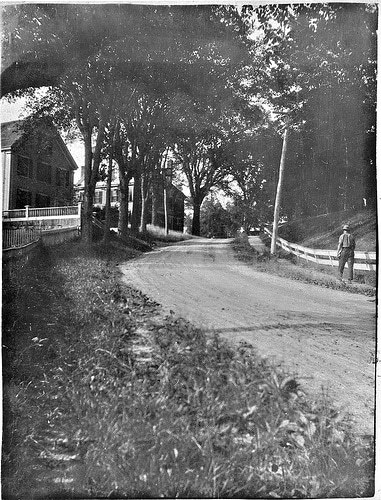
“An Eskimo custom offers an angry person release by walking the emotion out of his or her system in a straight line across the landscape; the point at which the anger is conquered is marked with a stick, bearing witness to the strength or length of the rage.” -Lucy Lippard, Overlay, 1983
When it comes to managing your anger, you may have heard it recommended to count to ten or to take a timeout and go somewhere for a cooling off period. The problem with such methods is that counting really doesn’t do the trick if you’re still right in the thick of (and staring at, and being stared at by) what set you off in the first place, and oftentimes when you leave to go somewhere else, your anger ends up building instead of dissipating; you start stewing in your room, or you talk to a friend who only eggs you on about how right you are, or you go get drunk which often leads not only to more anger but a whole other set of problems too.
In my experience, the best way to deal with a situation where you’re about to blow your top is to respectfully ask for a time out and then head right out the door to take a walk. As just discussed, walking can alleviate your anxiety and mellow you out. Plus, being alone with your thoughts can help you get perspective on what’s going down and how you really want to deal with it.
Baby won’t stop crying?

When you have a newborn, nothing is more stressful than when they’re on a crying jag and you can’t soothe them. One “home remedy” I personally found highly effective was taking the baby out for a walk. It’s easy when you have one of those carriers that loads right into the stroller. Rolling along in the fresh air acted as a fast and all-natural baby pacifier. Plus, it’s hard for new dads to get exercise in, so this baby-mollification method kills two birds with one stone.
Age catching up with you?
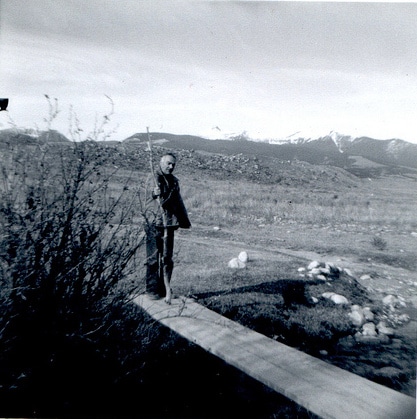
“When Nero advertised for a new luxury, a walk in the woods should have been offered. It is the consolation of mortal men. I think no pursuit has more breath of immortality in it. It is one of the secrets for dodging old age.” –Ralph Waldo Emerson, “Country Life,” 1858
Emerson was more right than he knew. Modern studies have shown that men who daily walk two miles or more have half the chance of developing dementia and Alzheimer’s disease than men who walk a quarter-mile or less each day. Another study found that people over the age of 60 who walk 6-9 miles a week retain more gray matter and suffer less “brain shrinkage” and cognitive impairment than those who walk less. What’s really interesting is that not only does walking affect your mental faculties, but your mental faculties affect your walking. Researchers have found that as your cognitive abilities decline, your walking gait becomes slower and shakier, so looking at someone’s stride is actually one way to diagnosis those who have or are developing dementia. As the New York Times reports: “Thinking skills like memory, planning activities or processing information decline almost in parallel with the ability to walk fluidly…In other words, the more trouble people have walking, the more trouble they have thinking.”
So hey, those old ladies in windsuits at the mall are on to something after all.
Need to work through a problem with a friend or lover?
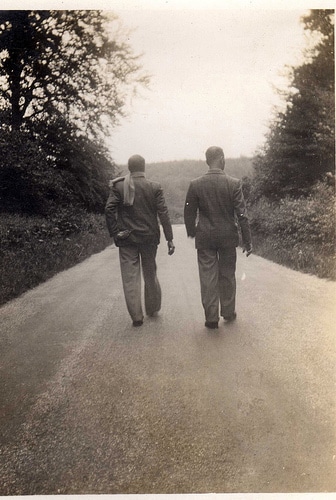
“The roads and paths you have walked along in summer and winter weather, the fields and hills which you have looked upon in lightness and gladness of heart, where fresh thoughts have come into your mind, or some noble prospect has opened before you, and especially the quiet ways where you have walked in sweet converse with your friend, pausing under the trees, drinking at the spring—henceforth they are not the same; a new charm is added; those thoughts spring there perennial, your friend walks there forever.” –John Burroughs, “The Exhilarations of the Road,” 1895
If you and a friend or significant other are grappling with some problem or issue or worry, there may be no better way of working through it than going for a walk together. When you sit face-to-face with someone, the mood can feel confrontational – you may be thinking about not making the “wrong” facial expression instead of the issue at hand, and if you do make the wrong expression, it can set the other person off. When you’re sitting or standing side-by-side, on the other hand, people feel more comfortable and open and less defensive. They can look off into the distance to gather their thoughts, grimace, and bite their lip without self-consciousness.
When you’re side-by-side on a walk, you have this benefit, plus all those mentioned above (stress-reduction, meditation, inspiration) that can enhance your ability to work through a problem with someone. Plus, walking provides the physical sensation of moving forward, which can translate into a mental sense of forward progress as well. The Chinese characters for walking mean putting one foot in front of the other – and that’s really the best way to deal with any dilemma or challenge that besets us.
“Afoot and light-hearted I take to the open road,
Healthy, free, the world before me,
The long brown path before me leading wherever I choose.Henceforth I ask not good-fortune, I myself am good-fortune,
Henceforth I whimper no more, postpone no more, need nothing,
Done with indoor complaints, libraries, querulous criticisms,
Strong and content I travel the open road.”
-Walt Whitman, “A Song of the Open Road”
Be sure to listen to our podcast with Erling Kagge about the magic of walking:




